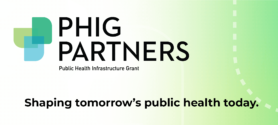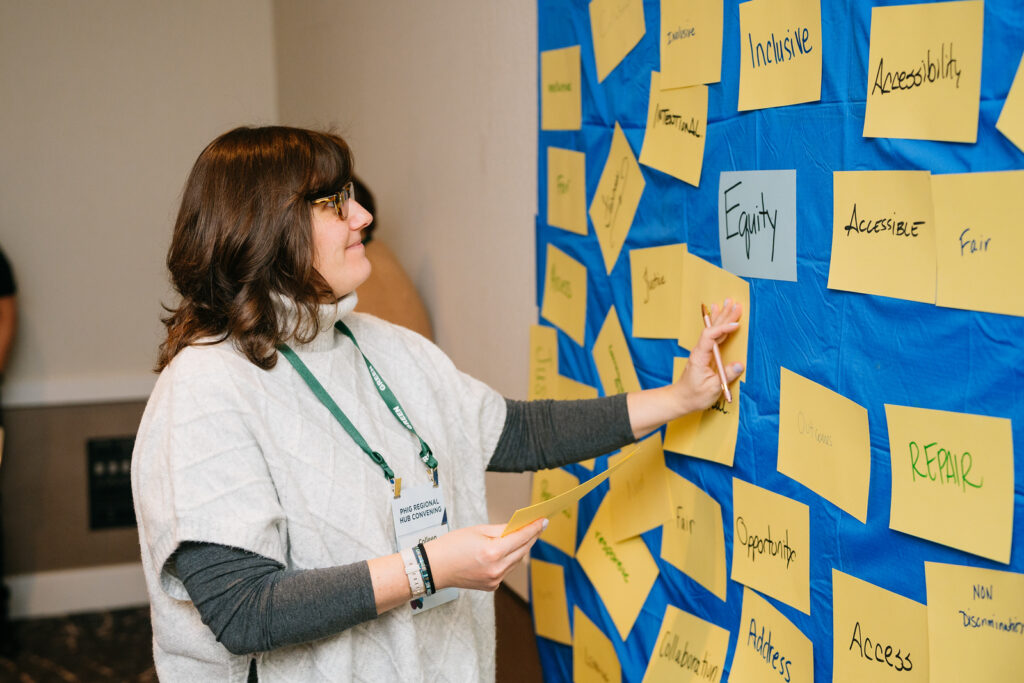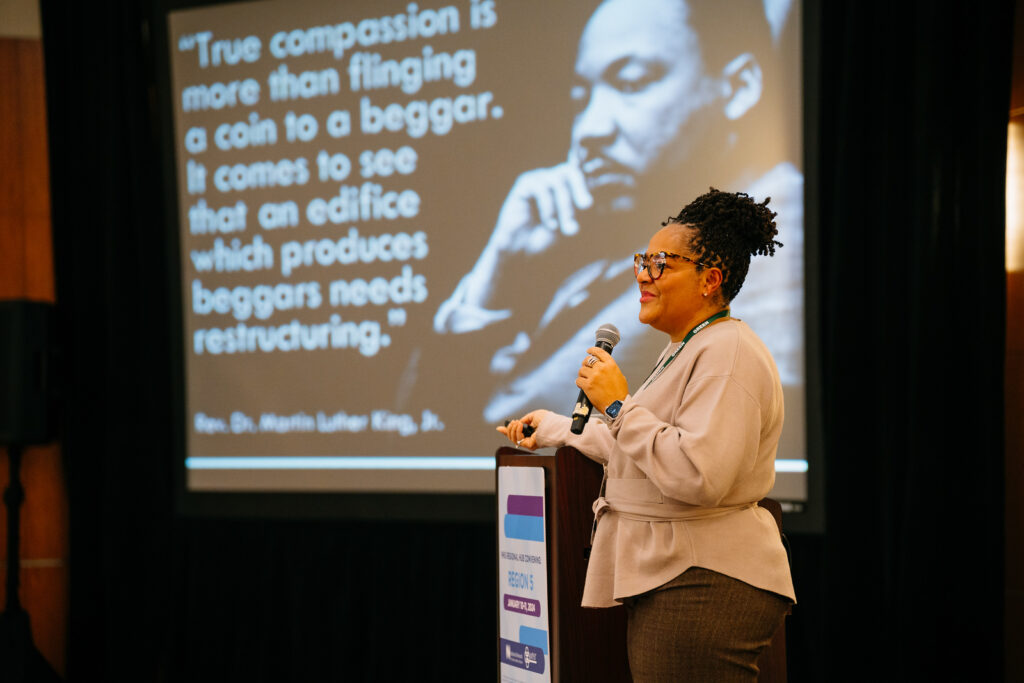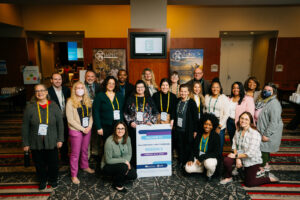Region 5 Begins 2024 with Largest PHIG Hub Convening to Date, Emphasizes Purpose-Driven Connections
- By: Chloe Lake
- Date
On January 10-11, 2024, Michigan Public Health Institute (MPHI) hosted the largest Public Health Infrastructure Grant (PHIG) Hub Convening thus far, bringing together over 85 people representing Region 5 health departments and national partners. Attendees included state, county and city health department employees from Michigan, Indiana, Illinois, Ohio, Wisconsin and Minnesota, as well as representatives from organizations who provide training and technical assistance to PHIG recipients, including:
- Ohio Public Health Partnership
- University of Wisconsin Population Health Institute
- University of Illinois, Chicago
- Data Across Sectors for Health (DASH)
- Public Health Institute of Metropolitan Chicago
- Region V Public Health Training Center
- PHIG National Partners: National Network of Public Health Institutes (NNPHI), Association of State and Territorial Health Officials (ASTHO), and the Public Health Accreditation Board (PHAB)
This was the seventh Hub convening within a larger series coordinated by NNPHI. Regional Hub convenings offer PHIG recipients in-person platforms to receive hands-on technical assistance, exchange insights, and build relationships with their Hub, national PHIG partners and technical assistance providers, and other health departments in their region. MPHI, which serves as NNPHI’s PHIG Hub for Region 5, planned their convening with a focus on deepening the relationships with recipients and partners that they have been building virtually throughout Year 1 of PHIG. “I was so proud of all the representation we had from not only each PHIG recipient health department, but from our technical assistance partners and organizations we hope to work with more as the grant progresses, said Cassie Harter, PHIG Project Coordinator at MPHI, continuing, “It was a great reflection of the time and resources we invested in building relationships with potential invitees prior to the event.”
CONVENING HIGHLIGHTS
- Site Introductions: The convening opened with site introductions, which provided a platform for all Region 5 PHIG recipients to share their plans, challenges, and measures of success. This session helped remind attendees of what we are collectively trying to accomplish through PHIG, how far we have yet to go, and how each recipient department has unique situations, challenges and strengths. While this session highlighted differences, it also demonstrated how recipients and technical assistance partners can collaborate and help one another, provided we remain intentional in the ways we connect.
- Keynote Address from Dr. Canady: MPHI’s CEO, Dr. Renée Branch Canady helped energize and inspire attendees during her keynote address, grounding everyone in a shared sense of purpose. One attendee remarked that Dr. Canady’s session alone made their travel to Chicago worthwhile!
- Attendee Engagement and Networking: Both the attendees and event organizers identified networking with peers and engaging with each other on shared work as a primary benefit of the convening. Several breakout sessions, including sessions focused on trauma-informed approaches to care and quality improvement and equity, generated rich conversations and major learning moments.
“It’s always great to hear real life experiences and gain knowledge from those who are doing the work, or have already done the work.” – Attendee response on post-event survey
LEARN MORE
More information and resources related to the Public Health Infrastructure Grant can be found at PHInfrastructure.org. More information about MPHI can be found at MPHI.org.
This work is supported by funds made available from the Centers for Disease Control and Prevention (CDC) of the U.S. Department of Health and Human Services (HHS), National Center for STLT Public Health Infrastructure and Workforce, through OE22-2203: Strengthening U.S. Public Health Infrastructure, Workforce, and Data Systems grant. The contents are those of the author(s) and do not necessarily represent the official views of, nor an endorsement, by CDC/HHS, or the U.S. Government.




 Subscribe To Our Communications
Subscribe To Our Communications